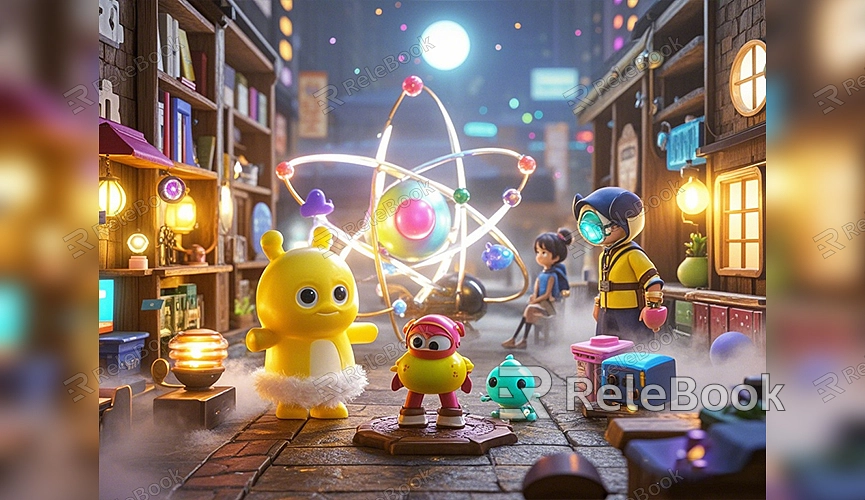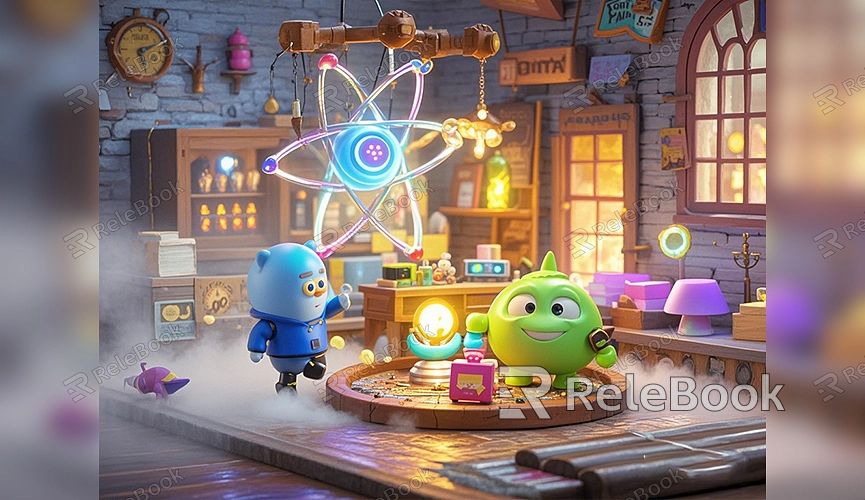How to Make a 3D Neon Atom Model
Creating a 3D neon atom model is a fun and challenging project in 3D modeling. Neon-style 3D models add a modern and visually striking touch to your work, making them perfect for various scenes and animations. This guide will walk you through the steps to create a stunning 3D neon atom model using Blender, from the basic shape creation to adding neon effects.
1. Preparation
First, ensure you have Blender installed and are familiar with the basic interface. If you are new to Blender, it’s recommended to get acquainted with its basic functions, such as model creation, material editing, and rendering settings.

2. Creating the Basic Model
Open Blender and start a new project. In the default scene, you'll see a cube and a camera. Begin by deleting the default cube (press “X” and select “Delete”). Next, we’ll create the basic structure of the atom. Go to “Add” > “Mesh” > “UV Sphere” to add a sphere. Adjust the sphere’s subdivisions to make it smoother.
In the 3D view, use the scaling tool (press “S”) to adjust the size of the sphere. This sphere will represent the nucleus of the atom. Then, create the electron orbits by adding a torus. Go to “Add” > “Mesh” > “Torus” and adjust its radius and subdivisions to match the nucleus sphere.
3. Adding Neon Effects
The key to achieving a neon effect is the glowing material. To make your model glow with a neon effect, you'll need to apply emission materials to both the sphere and the torus. First, select the nucleus sphere, then go to the Material Properties panel (the sphere icon on the right) and click “New” to create a new material. Set the material type to “Emission” and adjust the color and strength. Choose a vibrant color, like blue or purple, and increase the emission strength to achieve the neon effect.

Apply the same process to the torus, adding an emission material. You can tweak the emission strength of the torus to make it appear as though it’s glowing around the atom’s nucleus.
4. Refining Model Details
To make the model more realistic and detailed, you can add extra features. For instance, use Blender’s “Sculpting” mode to add subtle details and textures to the nucleus sphere. Adjust the torus to make it visually coherent. You can also add physical simulations, like slight vibrations or rotations, to enhance the animation effect.
5. Setting Up Camera and Lighting
Before rendering, set up the camera and lighting to ensure the best display of the neon effect. Position and angle the camera so that the model is centered and clearly visible in the view. Add a point light or spotlight to highlight the model’s glowing effect. Adjust the light’s color and intensity to enhance the overall appearance.
6. Rendering Settings
Once the model and materials are set up, go to the Render Settings panel. Choose a suitable rendering engine, such as Cycles or Eevee. Eevee is usually sufficient for neon effects because it provides real-time rendering and faster render times. Set the resolution and output format, then click the “Render” button to start rendering your neon atom model.
7. Post-Processing
After rendering, you can use Blender’s Compositor for post-processing. Add effects like color correction or blur to enhance the neon glow. You can also adjust the brightness and contrast of the video in the Video Sequence Editor to make the final result more striking.
During the process of creating a 3D neon atom model, if you need high-quality 3D textures and HDRIs, you can download them for free from [Relebook](https://textures.relebook.com/). For exquisite 3D models, visit [Relebook](https://3dmodels.relebook.com/) for a wide range of premium resources. These assets can add more detail and realism to your model, making your creation even more impressive.
Creating a 3D neon atom model involves multiple steps, from creating the basic model to achieving the neon effect, each step requiring careful adjustments and optimizations. With Blender’s powerful tools and material settings, you can craft a dazzling neon atom model that adds a modern touch and visual impact to your work. We hope this guide helps you master the techniques for making neon atom models and enhances your 3D modeling skills. Whether for animation or static display, mastering these techniques will make your creations more captivating.

